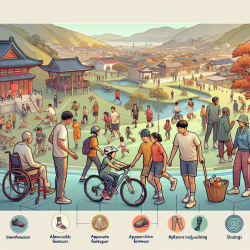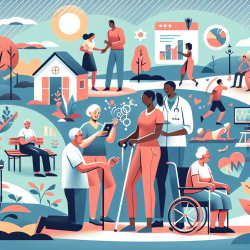Understanding the Impact of Socioeconomic and Behavioral Factors on Adolescent Injuries
In the realm of public health, adolescent injuries pose a significant concern, with numerous factors influencing their incidence. A recent study from South Korea, titled The influence of behavioural and socioeconomic factors on the community injury rates of adolescents assessed by the South Korean emergency medical services: an ecological approach, sheds light on how socioeconomic status (SES) and peer group behaviors impact injury rates among adolescents.
Key Findings of the Study
The study employed an ecological approach, analyzing data from the Korea Youth Risk Behavior Survey and the Korea Census Data. It examined how peer behaviors such as alcohol consumption, experiences of violence or bullying, and education on injury prevention, alongside neighborhood SES factors, influence injury rates among adolescents aged 13-15.
Some key findings include:
- The incidence rate of injuries occurring outside school was higher than those inside school.
- Peer group risk behaviors significantly influenced injury rates in boys, particularly inside school.
- For girls, rural areas presented a higher risk of outside-school injuries compared to urban areas.
- Neighborhood SES, such as the proportion of households not living in apartments, was a significant factor for outside-school injuries.
Implications for Practitioners
These findings have profound implications for practitioners focused on adolescent injury prevention. Understanding the nuanced impact of SES and peer behaviors can guide the development of targeted interventions. Here are some practical applications:
- Customized Interventions: Tailor injury prevention programs to address specific risk factors identified in different genders and environments. For example, focus on reducing bullying and violence in schools for boys.
- Community Engagement: Engage communities, especially in rural areas, to improve awareness and resources for injury prevention.
- Data-Driven Decisions: Utilize data from local surveys and studies to continuously refine and adapt intervention strategies.
Encouraging Further Research
While this study provides valuable insights, it also highlights the need for further research. Practitioners are encouraged to explore:
- The impact of other socioeconomic variables not covered in this study.
- Longitudinal studies to assess the long-term effects of early SES on adolescent health outcomes.
- Comparative studies across different cultural and geographical contexts to generalize findings.
By leveraging these insights and continuing research, practitioners can significantly contribute to reducing adolescent injury rates and improving public health outcomes.
To read the original research paper, please follow this link: The influence of behavioural and socioeconomic factors on the community injury rates of adolescents assessed by the South Korean emergency medical services: an ecological approach.










